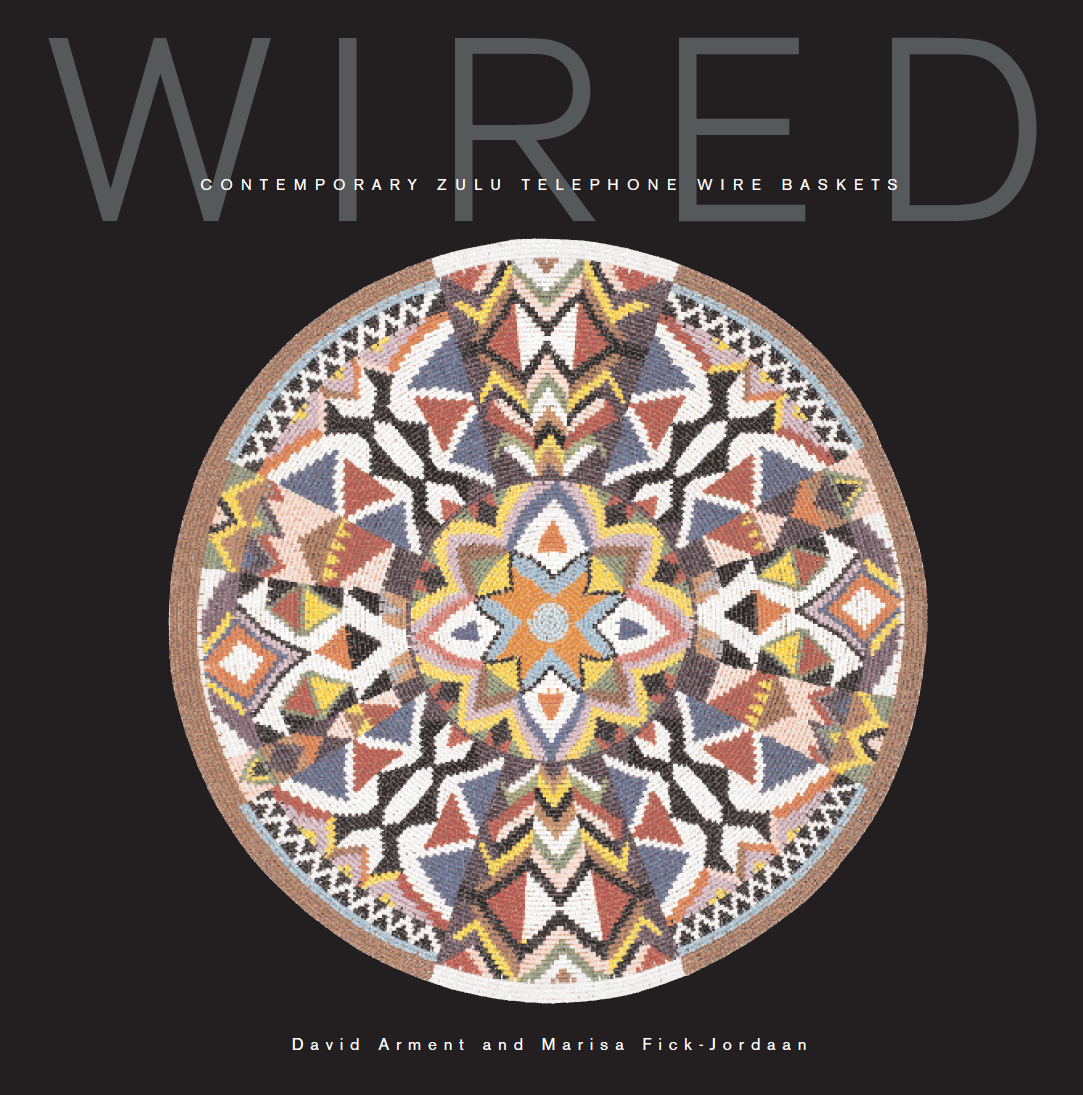W I R E DWIRED: CONTEMPORARY ZULU TELEPHONE WIRE BASKETS is the first book to document the development of wire weaving in South African art. With over 270 magnificent full colour images, Wired showcases the works of the most renowned contemporary weavers including Dudu Cele, Bheki Dlamini, Alice Gcaba, Zama Khanyile, Mboniseni Khanyile, Ntombifuthi Magwasa, Robert Majola, Zodwa Maphumulo, Simon Mavundla, Elliot Mkhize, Jaheni Mkhize, Alfred Ntuli, Bheki Sibiya, and Vincent Sithole. The foreword by Karel Nel, Associate Professor of Fine Art at Wits University, places the baskets in their historical and geographical contexts. Paul Mikula, founding trustee of the Bartel Arts Trust, architect, writer, and owner of the Phansi Museum, contributes a “Song of Praise” that celebrates the baskets and tells the story of their place in Nguni culture.
The decorative use of wire has long been a feature of southern African art work and, with advancements in telecommunications, a new type of wire – multi-colored, plastic-coated copper wire, referred to as telephone wire – has become available. In the late 1960s Zulu night watchmen started weaving scraps of this wire around their traditional sticks. The practice became popular among Zulu communities and today there is great innovation and creativity in the use of this medium. Artists have produced goods ranging from soft wire bowls and plates to glass bottle covers, tea sets, isikhetho (beer strainers), and pots, all created in a wide variety of colors and complex patterns. David Arment, one of the authors of Wired, had travelled extensively in southern Africa when he bought his first telephone-wire basket in the early 90s. He developed a passion for collecting baskets and since then has established, in Santa Fe, New Mexico, the premier collection of baskets by contemporary wire weavers. Meanwhile, Marisa Fick-Jordaan, was developing her own passion for baskets while she worked with the weavers of Siyanda (a residential area outside Durban). Fick-Jordaan set up ZenZulu, which supplies telephone-wire baskets to art shops around the world. These pieces have found their way to Paris, London, New York, and Los Angeles. The book was published in 2005, and is currently out of print.
|
